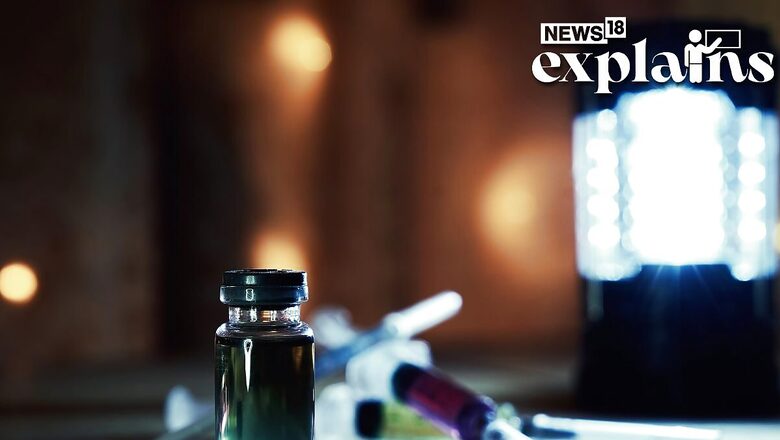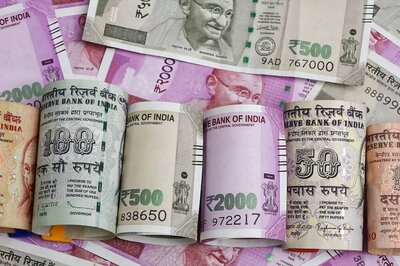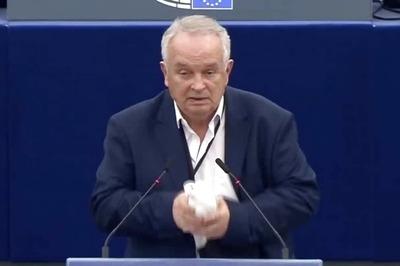
views
A 25-year-old woman from Kenya was apprehended at the international airport in Delhi for smuggling cocaine, which was dissolved in two whiskey bottles she was carrying, a senior customs official told PTI. The arrest took place after the woman arrived from Addis Ababa, Ethiopia, on Thursday.
During a thorough search, authorities discovered two whiskey bottles containing cocaine worth approximately Rs 13 crore. The accused was taken into custody, and the whiskey bottles with cocaine were confiscated. The official stated that these two bottles were given to her at the airport in Nairobi, and she was supposed to deliver them to an individual in Delhi.
The arrested passenger was presented before a local court, which ordered 14 days of judicial custody for her.
How was the woman able to smuggle the cocaine in a liquid form, and can this trick be a cause of concern for authorities? News18 explains:
What is Liquid Cocaine?
According to a report from the European Monitoring Center for Drugs and Drug Addiction (EMCDDA), liquid cocaine is extremely difficult to detect using scanners commonly found in ports and airports.
Liquid cocaine production involves dissolving cocaine in water, solvents, or other substances containing chemical compounds like mannitol, glucose, cellulose, or lactose. It is then concealed in products such as shampoo bottles or mixed with sugar cane molasses. This method facilitates trafficking, as the substance becomes less detectable when transported in containers or by drug couriers.
Compared to powdered cocaine, liquid cocaine is harder to identify due to the use of these techniques that mask its odour. Luis Fernando Trejos, a professor at Universidad del Norte, told InSight Crime that liquid cocaine was not previously a popular choice among traffickers because converting it back to its original form involves a decanting process that results in approximately 10 percent product loss.
“However, drug traffickers are now willing to take this risk in order to bypass controls and ensure the successful delivery of the product,” Trejos stated, emphasizing the motivation behind the use of liquid cocaine.
Why is it a Problem to Detect Liquid Cocaine?
Researchers from the Journal of Forensic Science, Medicine, and Pathology were quoted as saying in a 2014 Vice report that liquid cocaine is challenging to detect on abdominal plain films because its radiologic properties differ from those of powdered cocaine. The packets of liquid cocaine remain hidden to trained specialists since they have indistinct borders and can resemble regular bowel content. Confirmation of cocaine presence often requires processing the suspected drug mule through a CT scan, as the packets are not easily distinguishable.
Airports typically lack CT scanners, relying instead on full-body scanners, which do not provide the same level of detailed imaging. Dr. Andrew J. Einstein, director of cardiac CT research at Columbia University, told Vice that the power of full-body scanners is insufficient compared to CT scans, and a passenger would need to be scanned about 200,000 times to receive a comparable amount of radiation exposure to a typical CT scan.
One significant advantage of liquid cocaine is its ability to be incorporated into various materials, including clothing or objects like long hiking ropes. The extent of the problem at the time was such that Bolivian government officials have admitted their inability to detect liquid cocaine. Consequently, they had retrained airport agents to identify potential smugglers based on their appearance and behavior.
Other Such Cases in India
In a similar incident that occurred in November of the previous year, a Nigerian man was apprehended at Mumbai’s Chhatrapati Shivaji Maharaj International Airport for attempting to smuggle cocaine into India, a report by Hindustan Times said. The man was found carrying two whiskey bottles in which the cocaine was dissolved in liquid form. This method was employed to make it more challenging for law enforcement agencies to detect the illicit substance during the trafficking process.
The Directorate of Revenue Intelligence (DRI) in Mumbai seized the bottles containing liquid cocaine, which had an estimated value of ₹20 crore in the illegal market. The DRI had received specific intelligence regarding narcotics being smuggled into India by a passenger traveling from Lagos, Nigeria, to Mumbai via Addis Ababa. As a result, a surveillance operation was conducted by a team of DRI officers at the airport.
PTI contributed to this report



















Comments
0 comment